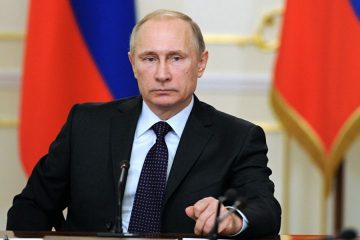Why a global manufacturing slump is a recurring threat

THE GLOBAL economy had an inauspicious start to 2019. Markets went into a tailspin and America’s government was locked in a seemingly interminable shutdown. But matters have not played out as dismally as they might have. The government in Washington is open again. America and China appear close to a trade deal which, although modest in its achievements, would nonetheless reflect a welcome easing of tension between the world’s two biggest economies. Markets have smiled on these developments: the MSCI index of global shares has risen by 10% so far this year.
Good news notwithstanding, many economic indicators have undergone a remarkable downward shift since early 2018. Back then economists were celebrating the emergence of a broad-based expansion. When it assessed the world economy in January last year, the IMF hailed the “broadest synchronised global growth upsurge since 2010”. Now the progress on trade talks is occurring against a darker economic backdrop.
Global manufacturing activity has slowed (see chart). Economies that are especially reliant on trade, such as Germany and Japan, have suffered. Industrial production in the euro area has fallen over the past year. Both Japan and South Korea reported tumbling exports in January. The World Trade Organisation’s global trade outlook index has been falling for the past year. In February it dipped to its lowest level since 2010. America’s economy, which is less trade-dependent, has been relatively less harmed, though industrial production contracted in January. Why does the world’s manufacturing upswing appear to have flopped?
It is tempting to blame President Donald Trump for the reversal. America has spent the past year ratcheting up its confrontation with China. The deceleration in manufacturing activity began around the time Mr Trump raised tariffs on washing machines and solar panels. It continued as America slapped tariffs first on steel imports and then on a range of Chinese goods, and as it restricted the involvement of Chinese technology firms in its economic affairs. A clash between the world’s two largest economies could not help but undermine global economic confidence.
But there is more to the manufacturing swoon than Mr Trump’s trade war. The downturn bears a striking resemblance to the bout of economic trouble that began in 2015. Then, too, global manufacturing activity faltered. That was partly due to the bust that followed America’s extraordinary shale-oil boom. But China was also a big influence on exporters’ fortunes. Germany, for instance, has come to rely on China’s voracious appetite for its capital goods.
Once they had hauled the economy through the global financial crisis of 2007-08, on the back of massive stimulus, China’s leaders pivoted towards economic reform in 2015. They sought to wean the economy off credit, which had grown at mind-boggling rates in 2009-14. They also took steps to open up China’s financial markets. The measures turned out to be premature: as constraints on capital movement were loosened, money fled the country and stock prices crashed. Financial turmoil radiated outwards, threatening to tip large swathes of the world economy into recession.
The downward spiral was quickly halted. China put its plans to lift capital controls on ice; the stimulus taps were turned back on. The government eased monetary policy and began spending with gusto. Officially, China’s fiscal deficit expanded only modestly in 2015 and 2016, to just under 4% of GDP. But the government is adept at using special financing vehicles, primarily at the local-government level, to borrow and to direct funds to projects; these do not affect the official deficit figures. Researchers at Goldman Sachs, an investment bank, estimate that China’s “augmented” budget deficit, which includes such tactics, rose to around 15% of GDP in early 2017. The explosion of borrowing did the trick. By the end of 2017, the world was on the road to a synchronised upsurge.
Having survived that close call, China’s leaders focused again on the economy’s dismaying reservoirs of red ink. They restricted lending to over-indebted firms and embarked on a bout of fiscal belt-tightening that would make even the prudent Germans blush. China’s augmented budget deficit has narrowed by about six percentage points of GDP since the beginning of 2017. Domestic demand has consequently weakened. As Brad Setser, an economist at the Council on Foreign Relations, a think-tank, has recently pointed out, China’s imports of manufactures for domestic use have fallen by more than its “processing imports”, or inputs into the products that China makes and exports. Its purchases of American goods have tumbled; imports from the rest of the world have fallen too. Although the trade war has played a role, the world economy’s recent ups and downs are more closely related to China’s on-and-off struggle to reform its economy and curb unruly borrowing.
Credit where it’s due
China should not matter so much. Its tight capital controls ensure that its financial links with the rest of the world remain modest. It is not yet the engine of global demand in the way that America is: Mr Setser notes that China’s manufacturing imports for its own consumption are only about a third as large as America’s (though recent growth in Chinese imports has been an important driver of manufacturing demand for some countries, such as Germany). The problem is not so much that the headwinds from China are powerful, but that the rest of the world is so poorly prepared to lean against them. Interest rates remain extraordinarily low. If the global manufacturing malaise worsens, America will have precious little room to cut rates in response; Europe and Japan will have none. Fiscal policy could pick up the slack. Advanced economies could badly use a dose of deficit-financed public investment. But neither the euro area nor America seem keen to build.
Such policy debates may be inconsequential this time. In the last few weeks China has begun turning on the stimulus taps yet again, propping up sentiment there. The world’s manufacturing slowdown may well prove as fleeting as that of 2015. Both episodes show that the rich world has chosen to put itself at the mercy of the fiscal management of the Chinese Communist Party. That is a curious decision—but not an unprecedented one.










